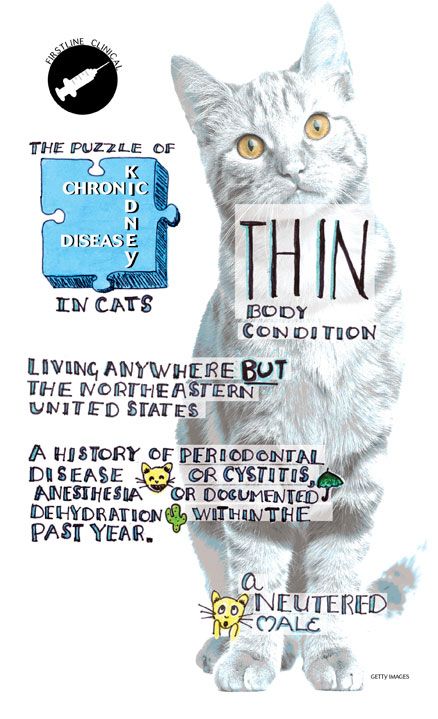Curtailing the cunning of chronic kidney disease in cats
A study investigates what factors might help us catch this covert killer early.
A clinical tidbit you may or may not have picked up on in your veterinary practice-by the time your patients are showing signs of chronic kidney disease (CKD), 75% or more of the kidney has already been destroyed. That's a shocking figure. Luckily, the remaining nephrons, or the functional units in the kidneys, become supercharged to help compensate for their lost brethren-really! But failure at some point is unavoidable. Can't we catch it before this level of destruction occurs?
In an effort to catch this deadly disease early and help kitties live all nine of their lives to the fullest, a recent study looked at the records of 1,230 cats treated for CKD at any Banfield Pet Hospital in the United States. All cats were seen during a one-year period, and their information was compared with kitties of the same age seen during the same time frame that didn't have CKD.
These were some of the interesting factors found to be associated with an increased chance of developing CKD in these 1,200+ kitties:

Hey pleasantly plump lady cats with naturally perfect teeth living in Rhode Island, you're safe!
Yeah, we can't really come to this firm of a conclusion from the study, but the researchers did emphasize that CKD should be on your radar for one segment of your feline patients in particular-skinny older cats. Even though these cats might not be showing signs yet, it wouldn't hurt to do more intensive screening and make sure all is A-OK. If CKD seems likely upon further testing, the researchers recommend early intervention measures such as feeding a renal diet before more serious clinical signs arise.